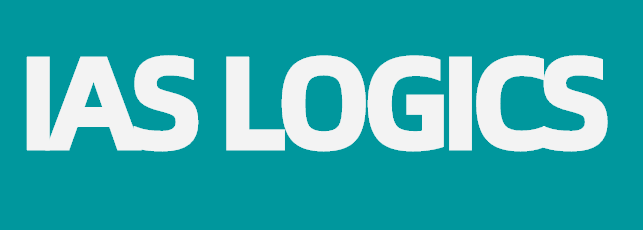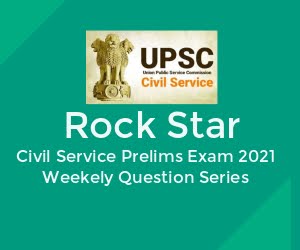The reading comprehension
- The reading comprehension passages cover a wide breadth of topics.
- While there are no formal rules governing the examiners, typically the passages cover natural science, legal, social science, and humanities.
- Additionally, the various passages may be written in different tones and in different styles. For example, some reading comprehension passages may be written in an argumentative tone with the author trying to convince the reader that the author's position on a particular issue is correct. Meanwhile, another reading comprehension passage may be purely informational.
- Another important factor to note regarding reading comprehension problems is that the answer choices are similar in nature to those found in logical reasoning problems. That is, there could be one or more answer selections that seem fairly on point, but the examinee is charged with selecting the best answer.
- As a general rule, reading comprehension problems test the examinee's ability to determine one of several things.
- First, the problem may require the examinee to determine the course of action taken by the author of the passage. This requires the examinee to wade through the content of the passage and understand the methods employed by the author to get across his/her point.
- Second, the problem may require the examinee to decipher the point of the passage. Unlike the first category, this type of reading comprehension problem requires the examinee to truly get into the subject matter of the passage and understand its nuances.
- Third, the problem may require the examinee to understand how the passage is put together.
- Again, in these types of problems it is not as important that the examinee understand the subject matter of the passage, as it is that the examinee understand the composition of the passage itself.
- Because of the timed nature of the CSAT, it is important that the examinee develop the ability to work through the reading comprehension passages quickly and diligently.
- CSMantra experts advise that the best way to approach reading comprehension problems is to actively read the passages on the first run through and take notes of critical items as they appear. This process will allow for quick reference points for the examinee when answering questions, and keep the examinee from having to reread large portions of the passage, or worse still, the entire passage.
Reading comprehension form questions
CSAT reading comprehension problems pretty much look identical to one another. Therefore, the only way to distinguish them is based on what they ask of the examinee. To put it very broadly, reading comprehension problems generally focus on one of two things, the form of the passage or the substance of the passage. It is important for examinees to understand that both form and substance questions will be asked of each passage that the examiner provides.
- Reading comprehension form questions typically require the examinee to step back from the passage and understand the satellite view of what is going on.
- As such, one of the most frequently seen reading comprehension form questions will require the examinee to state the overall point of the passage.
- Again, it is important for examinees to understand that these questions require the broadest view of the passage possible.
- Obstacles can appear because often passages are long enough and filled with many facts and independent conclusions.
- These smaller issues and conclusions can be confused with the main theme of the passage and distract the examinee from identifying the overriding issue.
- Additionally, examiners often tempt examinees with answer selections that appear correct, but are either slightly too focused, or slightly too broad.
- Because reading comprehension problems require selection of the best answer, the examinee must carefully choose the selection that appropriately reflects the overall point of the passage.
- Another type of reading comprehension form question requires the examinee to identify the motivation for, or purpose of the passage.
- This may sound similar to the first type of reading comprehension form problem, and it is. Perhaps the best way to differentiate the two is that the aforementioned overall-point questions focus on the passage, while these motivation questions require the examinee to focus on the author of the passage.
- For example, if the overall point of a passage has been identified, the motivation for or purpose of the passage is typically seen in how the author gets to the overall point.
- Other reading comprehension form questions require examinees to determine the specific purpose of a given paragraph. In answering these questions, it is imperative that the examinee first identify the purpose of the passage as a whole. This is critical because the specific purpose of a given paragraph can only be determined when the overall purpose of the passage is known.
- Reading comprehension form questions also may require examinees to identify the author's stance on a particular point or player in the passage.
- These questions (and more specifically, the answer selections) typically require the examinee to determine whether the author is pro, anti, or neutral on a given thing.
- This is, however, an overly simplistic representation of the answer choices, which may include such statements as "guarded optimism." Having said this, it is still considered a good practice to begin by broadly categorizing the author's tone and then working on from there.
- Finally, reading comprehension form questions include questions that require the examinee to understand the structure of the passage. These questions tend to be fairly straightforward. Unfortunately, they are among the least common reading comprehension question types.
Reading comprehension substance questions
Reading comprehension form and substance questions make up the reading comprehension portion of the CSAT. With each reading comprehension problem passage acting as a reference for five to eight questions, examinees can expect to see several form and substance questions referring to each passage. As is the case with reading comprehension form questions, reading comprehension substance questions can be further broken down into subcategories.
The first type of reading comprehension substance questions requires examinees to identify the author's statement as to a specific portion of or detail in the passage. The positive aspect of these types of reading comprehension substance questions is that they offer the examinee an obvious starting point for finding the answer. Generally, the fact or detail that is the subject of the question is readily identifiable in the passage. The key for the examinee is to quickly locate the subject fact and glean from the context what the author says about, or how the author uses the fact. Once again, this point focuses on the benefits of actively reading and taking notes on the passages.
Another type of reading comprehension substance question requires the examinee to make a deduction from the provisions of a passage. These questions require that the examinee first have a firm grasp of the overall point and purpose of the passage. This is true because these questions require the examinee to take what is explicitly provided in the passage and determine those things that are implicit, or must be factual, but are not specifically mentioned in the passage. In other words, the examinee must be able to imply from the enumerated facts expressly provided in the passage.
Reading comprehension substance questions may also require the examinee to identify an answer selection that is in line with a particular belief of the author as it is expressed in the passage. These questions may at first blush appear identical to the questions discussed in the paragraph above. These questions, however, are distinguishable. For example, while the above-mentioned questions require the examinee to deduce something from the passage, these questions go one step further. In requiring the examinee to deduce the author's belief from the passage, these questions can be considered somewhat broader in that the answer selection (including the correct answer selection) does not have to be within the same subject matter as the passage. Therefore, the correct answer may not be implicit in the passage at all.
Finally, reading comprehension substance questions may require the examinee to identify the purpose behind the inclusion of some enumerated portion of the passage. This should sound very familiar to a question type found in the reading comprehension form problems. However, there is a distinction. The form problem requires the examinee to focus on what the enumerated paragraph of the passage states. Here, the question is asking the examinee to identify why the enumerated portion is utilized. Again, these questions require the examinee to fully understand the larger point of the passage, so that the examinee will be able to understand how a given portion of the passage supports the author's point.
Tips to improve RC skills
1. Read a lot. You must read lot of newspapers, books, articles to increase your reading skills.
2. Enhance your vocabulary. Keep a dictionary handy. Make a note of new words and try to understand their meaning.
3. Highlight, summarize and review: After going through any article, make a note of important points, summary, and review important ideas.
4. Practice and practice: You need to solve lot of RC questions to get the reqquired confidence.
Examples
Directions: Questions 1—3 are based on the following reading passages. Read each passage carefully and then choose the best answer to each question. Answer the questions based upon what is stated or implied in the reading passage.
For many years, there has been much hand-wringing over the fate of Social Security once the baby boomers reach retirement age. Baby boomers, people born between 1946 and 1964, represent the largest single sustained growth of population in the history of the United States. It is the sheer enormity of this generation that has had economists worried as retirement beckons.According to the U.S. Census Bureau, by 2020, an estimated 80,000,000 Americans will have reached or surpassed the conventional age of retirement.With so many boomers retiring and drawing benefits but no longer paying into Social Security, many fear that the Social Security fund itself could go bankrupt.
However, a study released by the American Association for Retired Persons (AARP) that examined baby boomers’ plans for retirement found that for the most part, this generation is not expected to adhere to the conventional retirement scheme, a fact that may please the worriers in Washington, DC.
In its survey, the AARP broke baby boomers into different categories based on their financial
standing, degree of preparedness for retirement, and optimism toward the future. The AARP
found that of all groups surveyed, only 13% planned to stop working altogether once they reached retirement age; the remaining 87% planned to continue working for pay. The reasons to continue working varied among the different groups. For some, the plan to continue working is a financial decision. Between 25% and 44% of respondents reported they are not financially prepared to retire and will therefore continue working past retirement age. For the remainder of those planning to work past their mid to late 60s, the decision is based on long-held goals to start a business and/or the desire to stay active in their industry or community.
Eventually, most baby boomers will need to stop working as they progress into their 70s, 80s,
and beyond. But with such large numbers planning to continue working, thereby continuing to
pay into the Social Security fund, perhaps Social Security will be able to withstand the end of the baby boom and continue to be a safety net for future generations.
1. Which of the following titles would be most appropriate for this passage?
a. The AARP and Social Security
b. Baby Boomers Bankrupt Social Security
c. Baby Boomers Will Work for Pay Beyond Retirement
d. Worries about Social Security May Be Unfounded
e. Economists Fear Baby Boomers’ Impact on Social Security
Solution: This choice offers the best title for the passage, which explains why the “worriers in Washington” may have nothing to fear after all. Choice a is incorrect because the passage is not about the relationship between the AARP and Social Security or the AARP’s position on Social Security issues. Choice b is incorrect because the passage actually argues the opposite: that most baby boomers will continue to pay into Social Security long after the traditional age of retirement. Choice c is true, but it is just one specific fact cited within the passage to support the main idea. Choice e is also true, but the passage explains why the economists’ fears are unfounded.
2. According to the author, baby boomers are not likely to bankrupt the Social Security fund primarily because
a. the government has raised the official age for retirement.
b. most baby boomers are financially prepared for retirement.
c. most baby boomers plan to work past retirement age.
d. most baby boomers are active in their communities.
e. most baby boomers will not need supplemental income.
Solution: The AARP study cited in the third paragraph reveals that 87% of the baby boomers surveyed “planned to continue working for pay” once they reach retirement age. The passage does not state that the government raised the retirement age (choice a). Choices b and e are incorrect because the AARP survey also notes that “between 25% and 44% of respondents reported they are not financially prepared to retire,” which means they will need supplemental income. A desire to remain active in their community (choice d) is one of the reasons many baby boomers will continue to work, but it is the fact that they will continue to work (not why they will continue to work) that allays the fear of a bankrupt system.
3. The author cites statistics from the AARP survey primarily to
a. support the assertion that baby boomers are the largest group of retirees in U.S. history.
b. show that baby boomers will not retire en masse as feared.
c. suggest that better financial planning is needed for the elderly.
d. show how optimistic baby boomers are about their future.
e. show the correlation between retirement age and optimism.
Solution: The survey statistics demonstrate that most baby boomers will keep working, so the Social Security system will not encounter a sudden massive strain as baby boomers reach the retirement age. Choice a is incorrect because although the number of baby boomers is cited (80,000,000), no other figure is cited in comparison. One statistic from the survey suggests that many baby boomers have not planned well for retirement (choice c), but several other statistics are also cited, so this cannot be the main purpose. The passage states that the survey was designed in part to measure baby boomers’ optimism (choice d), but the passage does not cite results of questions in that category. Choice e is incorrect for the same reason.





